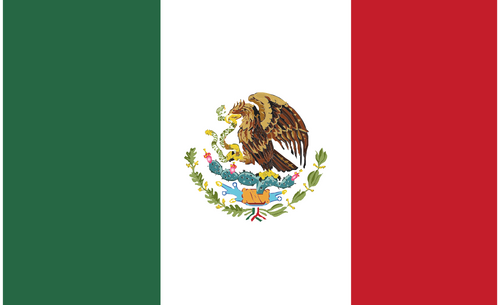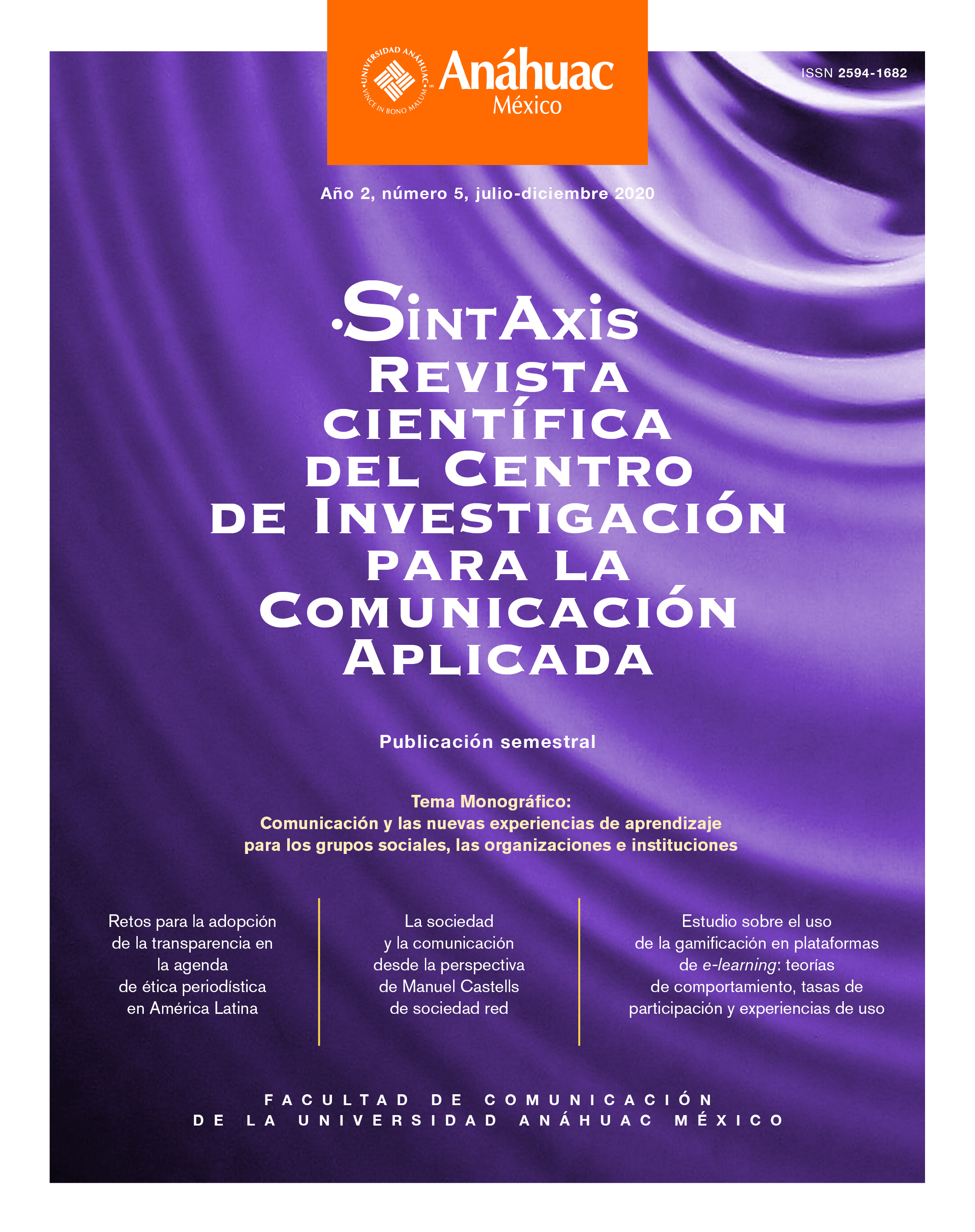Las redes semánticas en torno a la burocracia y la función pública de los habitantes de Villahermosa, Tabasco, como parte de las representaciones sociales y la imagen de los servidores e instituciones públicas
DOI:
https://doi.org/10.36105/stx.2020n5.06Palabras clave:
imagen, representaciones sociales, burocracia, función pública, instituciones públicas, comunicación organizacionalResumen
A pesar de que la burocracia y la función pública son modelos, actuaciones y resultados de una forma muy específica de organización, trabajo y administración, inoperante para la mayor parte de la sociedad civil, las instituciones públicas que las practican generan una imagen institucional y diversas representaciones sociales que pueden ayudarnos a comprender las percepciones, aspiraciones, experiencias, juicios de valor y explicaciones, positivas o negativas, que las personas tienen al interactuar con ellas. Por lo que, a través de las redes semánticas naturales, se pudieron determinar los campos semánticos que hay sobre la burocracia y la función pública de una institución en 100 personas de la ciudad de Villahermosa, Tabasco. Los resultados arrojan la coexistencia de valores positivos y negativos como parte de la imagen y de las representaciones sociales. De manera más específica, la burocracia tiene una imagen y representación social negativa, pero los funcionarios públicos tienen una imagen y representación social positiva. Un análisis más amplio de otras instituciones públicas establecerá un panorama más claro sobre los aspectos positivos o negativos de la imagen y de las representaciones sociales de las instituciones públicas de esa zona.
Descargas
Referencias
Arnold, L. (1991). Burocracia y burócratas en México 1742-1835. México: Consejo Nacional para la Cultura y las Artes.
Bacharach, S. B. y Aiken, M. (1977). Communication in administrative bureaucracies. Academy of Management Journal, 20(3), 365–377. https://doi.org/10.2307/255411
Baekgaard, M., Mortensen, P. B. y Seeberg, H. B. (2018). The bureaucracy and the policy agenda. Journal of Public Administration Research & Theory, 28(2), 239–253. https://doi.org/10.1093/jopart/mux045
Barenstein, J. (1982). El análisis de la burocracia estatal desde la perspectiva weberiana. 2a. ed. México: CIDE.
Blau, P. M. y Meyer, M. W. (1971). Bureaucracy in modern society. 2a. ed. New York: Random-House.
Bovens, M. y Zouridis, S. (2002). From street-level to system-level bureaucracies: how information and communication technology is transforming administrative discretion and constitutional control. Public Administration Review, 62(2), 174. https://doi.org/10.1111/0033-3352.00168
Buffat, A. (2015). Street-level bureaucracy and e-government. Public Management Review, 17(1), 149–161. https://doi.org/10.1080/14719037.2013.771699
Byrkjeflot, H. y Engelstad, F. (2018). Bureaucracy and society in transition: comparative perspectives. Bingley, UK: Emerald.
Cañas, F. D. P. (2012). Burocracia y cancillería en la Corte de Juan II de Castilla (1406-1454): estudio institucional y proposográfico. Salamanca, España: Ediciones Universidad de Salamanca.
Carnevale, D. G. y Stivers, C. (2019). Knowledge and power in public bureaucracies. From pyramid to circle. New York: Routledge.
Carrasco, C. (1975). La burocracia en la España del siglo XIX. Madrid, España: Instituto de Estudios de Administración Local.
Castañeda, A. (2016). Las redes semánticas naturales como estrategia metodológica para conocer las representaciones sociales acerca de la investigación en el contexto de la formación profesional
de los comunicadores. Estudios sobre las culturas contemporáneas, 12(43), 123-168.
Clawson, D. (1980). Bureaucracy and the labor process: the transformation of u.s. industry, 1860-1920. New York: Monthly Bureaucracy Press.
Costa, J. (2009). El DirCom hoy. Dirección y gestión de la comunicación en la nueva economía. Barcelona, España: Costa Punto Com.
Coyne, C. J. (2008). The politics of bureaucracy and the failure of postwar reconstruction. PublicChoice, 135: 11–22.
Crozier, M. (1964). The bureaucratic phenomenon. Chicago, IL: University of Chicago Press.
Dandeker, C. (1990). Surveillance, power and modernity: bureaucracy and discipline from 1700 to present day. Cambridge, UK: Polity Press.
Danet, B. (1971). The language of persuasion in bureaucracy: “modern” and “traditional” appeals to the Israel customs authorities. American Sociological Review, 36(5), 847–859. https://doi.org/10.2307/2093671
Du Gay, P. (2000). In praise of bureaucracy: Weber, organization and ethics. London, UK: Sage.
Du Gay, P. (ed). (2005). The values of bureaucracy. Oxford, UK: Oxford University Press.
Eymar, C. (2009). El funcionario poeta: elementos para una estética de la burocracia. Madrid, España: Fórcola Ediciones.
Figueroa, J. G., González, E. y Solís, V. (1981). Una aproximación al problema del significado: las redes semánticas. Revista Latinoamericana de Psicología, 13(3), 447-458.
Gould, M. y Howson, A. (2018). Bureaucratic surveillance. Social interactions in groups and organizations. Research Starters Sociology, 1–6.
Hansen, H., Lundberg, K. y Syltevik, L. J. (2018). Digitalization, level bureaucracy and welfare users’ experiences. Social Policy & Administration, 52(1), 67–90. https://doi.org/10.1111/spol.12283
Harris, M. (2006). Technology, innovation and post-bureaucracy: the case of the British Library. Journal of Organizational Change Management, 19(1), 80–92. https://doi.org/10.1108/ 09534810610643703
Hummel, R. P. (1977). The bureaucratic experience. New York: St. Martin’s Press.Hunter, I. (1998). Repensar la escuela: subjetividad, burocracia y crítica. Barcelona, España: Pomares-Corredor.
Instituto Nacional de Administración Pública. (2005). De la burocracia al management. Del management a la gobernanza. Madrid, España: Instituto Nacional de Administración Pública.
Ionescu, L. (2016). Bureaucratic communication in government administration. Annals of Spiru Haret University, Journalism Studies, 17(1), 5–12.
Jackson, P. M. (1983). The political economy of bureaucracy. Totowa, NJ: Barnes & Noble.
Jenning, E. E. (1966). El ejecutivo en la empresa y en la administración pública: autócrata, burócrata, demócrata. Barcelona, España: Sagitario.
Joly, J. (2014). Do the media influence foreign aid because or in spite of the bureaucracy? A case studyof Belgian aid determinants. Political Communication, 31(4), 584–603. https://doi.org/10.1080/10584609.2013.879361
Klemsdal, L. (2013). From bureaucracy to learning organization: critical minimum specificationdesign as space for sensemaking. Systemic Practice & Action Research, 26(1), 39–52.
https://doi.org/10.1007/s11213-012-9267-3
Leiby, J. S. (1986). Colonial bureaucrats and the Mexican economy growth of a patrimonial state. 1763-1821. New York: P. Lang.
Lerner, B. (1993). Democracia política o dictadura de las burocracias. Una lectura de Max Weber con miras al porvenir. México: UNAM.
Lystad, M. H. y Stone, R. C. (1956). Bureaucratic mass media: a study in role definitions. Social Forces, 34(4), 356–361. https://doi.org/10.2307/2573670
Marsh, C. P., Dolan, R. J. y Riddick, W. L. (1967). Anomia and communication behavior: the relationship between anomia and utilization of three public bureaucracies. Rural Sociology, 32(4), 435–445.
Meier, K. J. y Bohte, J. (2007). Politics and the bureaucracy. Policymaking in the fourth branch of government. Belmont, CA: Wadsworth Cengage Learning.
Meléndez, L. (2005). Derecho burocrático (incertidumbre jurídica). México: Porrúa.
Meyer, H. D. (1995). Organizational environments and organizational discourse: bureaucracy between two worlds. Organization Science, 6(1), 32–43. https://doi.org/10.1287/orsc.6.1.3
Monteiro, D. (2016). Street-level bureaucracy revisited. Language & Dialogue, 6(1), 54–80. https://doi.org/10.1075/ld.6.1.02mon
Moscovici, S. (1981). On social representations. En J. P. Forgas (ed). Socialcognition perspectives on everyday knowledge (pp. 181-209). London, UK: Academic Press.
Moscovici, S. (ed.) (1985). Psicología social I. Influencia y cambio de actitudes, individuos y grupos. Madrid, España: Paidós.
Mouzelis, N. P. (1973). Organización y burocracia: un análisis de las teorías modernas sobre organizaciones sociales. Barcelona, España: Península.
Oropeza, A. (2005). La evaluación de la función pública en México. México: Plaza y Valdés.
Page, E. C. (1985). Political authority and bureaucratic power: a comparative analysis. Knoxville, TN:
University of Tennesse Press.
Pärna, O. y von Tunzelmann, N. (2007). Innovation in the public sector: Key features influencing the development and implementation of technologically innovative public sector services in the UK, Denmark, Finland and Estonia. Information Polity: The International Journal of Government & Democracy in the Information Age, 12(3), 109–125. https://doi.org/10.3233/IP-2007-0118
Picard, R. G. (1996). The rise and fall of communication empires. Journal of Media Economics, 9(4), 23. https://doi.org/10.1207/s15327736me0904_2
Richardson, S. (2011). The political economy of bureaucracy. Oxford, UK: Routledge.
Ritchie, M. N. (2018). Back-channel representation: a study of the strategic communication of senators with the us Department of Labor. Journal of Politics, 80(1), 240–253. https://doi.org/10.1086/694395
Rubin, H. J. (1974). Modes of bureaucratic communications: examples from Thai local administration. Sociological Quarterly, 15(2), 212–230. https://doi.org/10.1111/j.1533-8525.1974.tb00889.x
Savage, M. (1995). Property, bureucracy, and culture: middle-class formation in contemporary Britain. London, UK: Routledge.
Schwartz, H. y Jacobs, J. (1984). Sociología cualitativa. México: Trillas.
Snellen, I. (2001). ICTs, bureaucracies, and the future of democracy. Communications of the acm, 44(1), 45–48. https://doi.org/10.1145/357489.357504
Tejada, J. M. y Arias, L. F. (2003). El significado de tutoría académica en estudiantes de primer ingreso a la licenciatura. Revista de la Educación Superior, 32(127), 25-38.
Valdez, J. L. (1998). Las redes semánticas naturales, usos y aplicaciones en psicología social. Universidad Autónoma del Estado de México.
Van Duivenboden, H., y Thaens, M. (2008). ICT-driven innovation and the culture of public administration: A contradiction in terms? Information Polity: The International Journal of Government & Democracy in the Information Age, 13(3/4), 213–232. https://doi.org/10.3233/IP-2008-0157
Von Mises, L. (1945). Bureaucracy. Glasgow, Scotland: William Hodge & Co.
Weber, M. (1977). ¿Qué es la burocracia? Buenos Aires, Argentina: Pléyade.
Publicado
Número
Sección
Licencia
Sintaxis. Revista científica del Centro de Investigación para la Comunicación Aplicada© se distribuye bajo una Licencia Creative Commons Atribución-NoComercial-SinDerivadas 4.0 Internacional.
El autor conserva los derechos patrimoniales sin restricciones y garantiza a la revista el derecho de ser la primera publicación del trabajo. El autor es libre de publicar en cualquier otro medio su artículo, como un repositorio institucional.

















